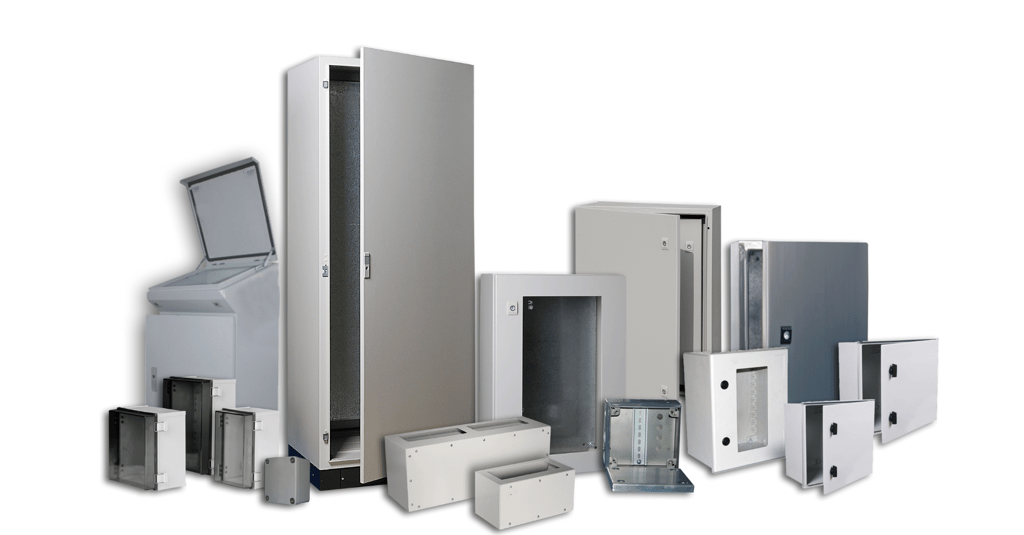Latest Innovations in Industrial Chassis Cabinets
5/19/20244 min read


Introduction to Industrial Chassis Cabinets
Industrial chassis cabinets are essential components in various sectors, serving as protective housings for critical electronic and mechanical systems. These cabinets are designed to safeguard sensitive equipment from environmental hazards such as dust, moisture, and temperature extremes, ensuring the longevity and reliability of the housed components.
The basic structure of an industrial chassis cabinet typically includes a robust frame made from durable materials like stainless steel or aluminum, which provides the necessary support and protection. The exterior is often coated with protective finishes to enhance corrosion resistance and durability. Internally, these cabinets are designed with customizable mounting options to accommodate a wide range of electronic and mechanical components.
Standards and certifications play a crucial role in the manufacturing of industrial chassis cabinets. Adherence to guidelines such as the National Electrical Manufacturers Association (NEMA) standards or the International Electrotechnical Commission (IEC) standards ensures that these cabinets meet stringent safety and performance criteria. These standards dictate various aspects, including the cabinet's resistance to environmental conditions, structural integrity, and overall reliability.
Over the years, the design and functionality of industrial chassis cabinets have evolved significantly. Initially, these cabinets were simple enclosures primarily focused on providing basic protection. However, advancements in technology and increasing industry demands have driven the development of more sophisticated and specialized cabinets. Modern industrial chassis cabinets now incorporate features such as enhanced thermal management systems, advanced locking mechanisms, and modular designs that allow for easy customization and scalability.
Understanding the foundational aspects of industrial chassis cabinets is crucial for appreciating the latest innovations in this field. As industries continue to evolve, the need for more advanced and efficient protective solutions becomes increasingly important, paving the way for ongoing advancements in the design and functionality of industrial chassis cabinets.
Cutting-Edge Technologies and Features
Modern industrial chassis cabinets have seen significant advancements, driven by the need for increased efficiency, durability, and security. One of the most notable innovations is the use of lightweight yet durable composite materials. These materials provide the necessary robustness to withstand harsh industrial environments while reducing the overall weight, making transportation and installation easier.
Another critical area of development is in cooling and thermal management systems. Enhanced systems now employ advanced techniques such as liquid cooling, heat pipes, and thermoelectric cooling. These technologies ensure that equipment housed within the cabinets maintains optimal operating temperatures, thereby extending its lifespan and improving performance. The integration of smart sensors and IoT devices allows for real-time monitoring of temperature and humidity levels, facilitating timely interventions to prevent overheating.
Modular design is another significant innovation in industrial chassis cabinets. This feature allows for easy expansion and maintenance, enabling industries to adapt quickly to changing technological requirements. Modular designs mean that components can be added or replaced without extensive downtime, ensuring continuous operation and reducing maintenance costs.
Security has also been a focal point in the development of modern industrial chassis cabinets. Advanced locking mechanisms and intrusion detection systems are now standard features. These systems employ biometric scanners, RFID locks, and other advanced technologies to prevent unauthorized access. Intrusion detection systems can alert operators in real-time to any security breaches, ensuring that sensitive equipment and data remain protected.
The integration of IoT and smart technologies represents a significant leap forward. These advancements enable real-time monitoring and remote management of industrial chassis cabinets. Operators can now receive instant notifications and control cabinet functions from remote locations, improving response times and operational efficiency. This seamless integration of smart technologies ensures that industrial operations remain smooth, secure, and efficient.
Impact on Industry and Future Trends
The introduction of advanced industrial chassis cabinets has significantly impacted various sectors, primarily manufacturing, telecommunications, and data centers. These innovations have ushered in a new era of operational efficiency, minimized downtime, and cost reductions. For instance, in the manufacturing sector, companies have leveraged these advanced chassis cabinets to streamline production processes. A notable case is that of a leading automotive parts manufacturer that integrated smart chassis cabinets into its assembly lines. The result was a remarkable 30% increase in productivity and a substantial reduction in equipment failures.
In telecommunications, the need for robust and reliable infrastructure is paramount. Advanced chassis cabinets have enabled telecom companies to enhance their network reliability and uptime. A telecommunications giant deployed these cabinets in its data centers, leading to a 25% decrease in maintenance costs and a significant boost in service uptime. This transformation is a testament to the critical role of innovative chassis cabinets in sustaining high-performance data networks.
Data centers, the backbone of the digital age, have also benefited immensely. The adoption of next-generation industrial chassis cabinets has resulted in more efficient cooling solutions and better space utilization. A leading data center provider reported a 15% reduction in energy consumption and a 20% increase in server density after upgrading to these advanced cabinets. Such improvements underscore the importance of continuous innovation in chassis cabinet design.
Looking ahead, the future of industrial chassis cabinets is set to be shaped by several key trends. The integration of artificial intelligence (AI) for predictive maintenance is expected to revolutionize the field. AI-driven analytics will enable real-time monitoring and preemptive identification of potential failures, further reducing downtime and maintenance costs. Additionally, the growing emphasis on sustainability is pushing manufacturers to adopt eco-friendly materials and designs. The use of recyclable materials and energy-efficient manufacturing processes will not only benefit the environment but also align with the increasing regulatory demands for sustainable practices.
In conclusion, the continuous evolution of industrial chassis cabinets is poised to bring about transformative changes across various industries. By embracing these innovations, companies can achieve greater efficiency, reduced operational costs, and contribute to a more sustainable future.
